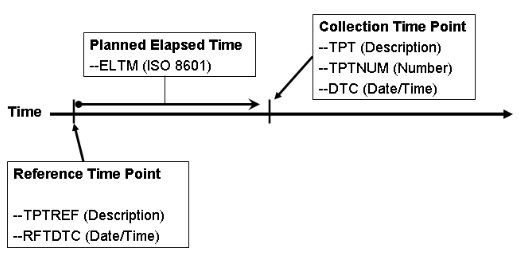Timeframes, fixed points in time, and other milestones may be defined in the context of a study as references to which the timing of other collected observations is related. In such cases, timeframes are referred to as reference periods and such fixed points in time and milestones are referred to as reference points.
Timing Relative to Reference Periods and Other Dates
The start and end dates (and times when applicable) of an applicant-defined reference period for a study are represented using variables RFSTDTC and RFENDTC, respectively, in the Demographics (DM) domain. Applicants may also define dates/times, in addition to a study reference period, from which to reference the relative timing of observations. In both cases, such dates are used as references from which to populate the variables described below.
Timing Relative to Reference PointsApplicants may define fixed reference points within a study from which to reference the relative timing of observations. In such cases, timepoints are used as references from which to populate the variables described below.
